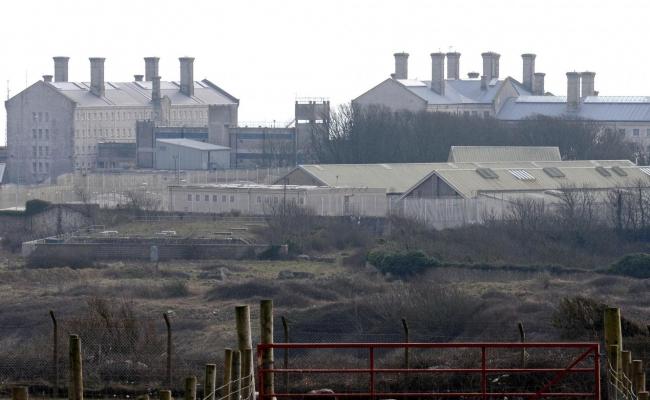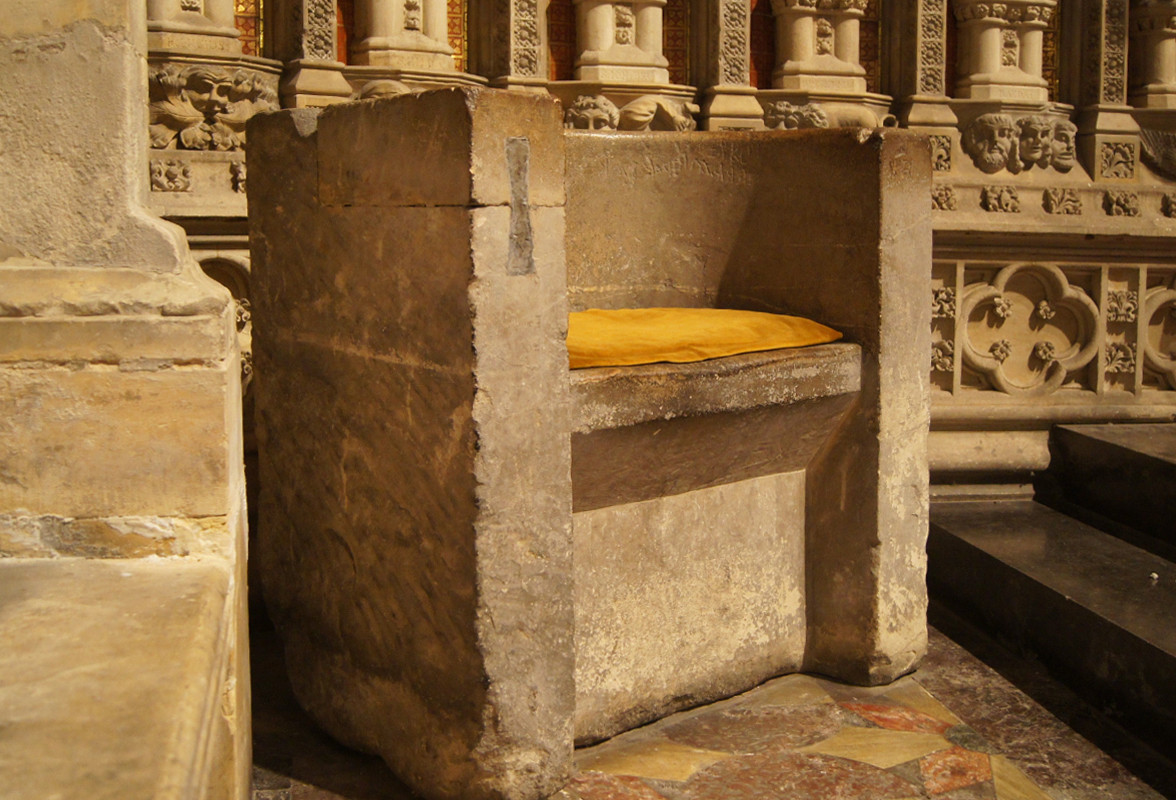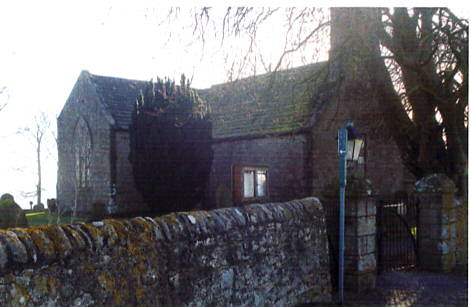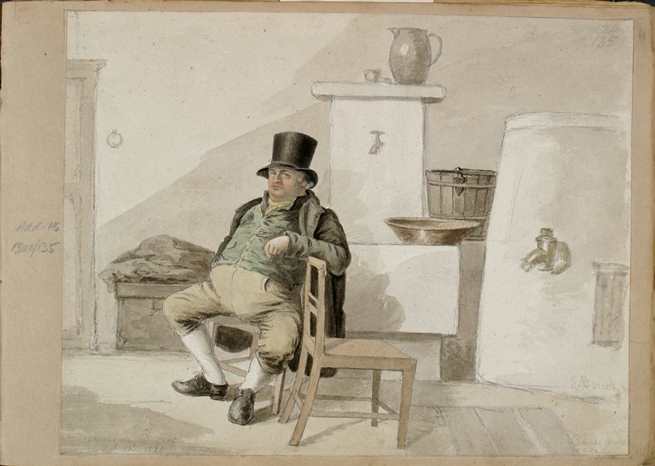Cuthbert Blackett (1840-1907), a joiner, was the illegitimate son of Elizabeth Blackett (1814-1873). In 1864 he was charged with the manslaughter of John Emmerson at Crook, Co. Durham, but was acquitted. He then seems to have embarked on a life of crime, though not too successfully, as he was convicted of stealing in 1871, 1873 and 1877. In 1881 he was a guest of Her Majesty in Portland Prison, Dorset, serving 7 years penal servitude for larceny. Ten years earlier William Blackett, born about 1844 in London, was a convict in the same prison.

Cuthbert was not the first Blackett to fall foul of the law, as the following extracts from Durham Quarter Sessions Rolls show:-
- Edmund Blacket of Stanhope, yeo., on 4 July 1555 at Brandon Field lay in ambush on the highway to kill Nicholas Barrow of Woodcroft, lab., and assaulted the same.
- Edmund Blacket of Stanhope, yeo., on 18 July 1555 with force and arms broke and entered the close of Nicholas Blacket of Woodcroft, gen., and lay in wait to kill and assaulted Nicholas Barrow.
- Richard Blackett of Sowandburn in the parish of Stanhope, co. Durham, yeo., and Edmund Blackett of the same, yeo., with 4 other unknown malefactors on 20 Sept. 1555 assembled rioutously by the special order and procurement of William Blackett of Sowandburn at Ferrefeilde in the parish of Stanhope and assaulted Alice Maddyson, widow, so that her life was despaired of.
- Thomas Blackett of Woodcroft, gen., [and 11 other accused], with 30 unknown malefactors with force and arms, namely swords, sticks, knives, bows and arrows [etc.] in warlike fashion on 3 May 1556 assembled at the manor of John Lumley, knt., Lord Lumley, at Butterby, being a pernicious example to all such delinquents.
- Thomas Blackett of Woodcroft, co. Durham, gen., on 2 Dec 1599 assaulted Cuthbert Morgaine in the parish church of Stanhope, seated at the time of common prayer.
A burial entry at Stanhope records that “Thomas Morgan ye sonne of John Morgan of Mill Howses was buried the 17th June 1619. Ther was great disorder committed in the churche at this burial about ye grave making in ye stall that belongs to Woodcroft & Mill Howses which disorder was committed by ye Blacketts.”
In 1537 Jacobus (i.e. James) Blackett, of Brampton, Derbyshire found himself 50 miles away in Beverley in the East Riding of Yorkshire. He had made the journey not merely to admire the splendour of Beverley Minster, beautiful though that is, but to seek sanctuary, having been accused of murder. (The victim is unknown.) At the time criminals could claim sanctuary at Beverley if they could physically touch one of several sanctuary stones, originally made in the shape of a cross, sited on each of the roads leading into the town, approximately a league (about three miles) from the church door. The closer to the church the fugitive got, the greater the degree of sanctuary, and the final inner sanctum was reached by sitting on a stone chair, the “Frith Stool”, near the church altar, which fugitives must have regarded as the best seat in the house. The bailiff would then receive the oath of the fugitive, being paid a fee of 2s 4d for his trouble, and the clerk would record it, making do with a fee of only 4d. The fugitive would then enjoy sanctuary for 30 days, with food and lodging thrown in.

If this seemed too good to be true, it was, as the reckoning came later. Within 40 days, if he wished to avoid being sent for trial, the criminal had to appear before the coroner, clad in sackcloth and with his head shaved. He would then be branded on his right hand with the letter “A”, signifying that he was swearing to “abjure the realm”, i.e. leave the country for ever. He was then free to make his way to the nearest port. Of course, once he had left Beverley, the criminal could have merely changed clothes, worn a hat until his hair grew, and kept his right hand hidden, and could then have resumed his felonious ways within the country. The penalty for such conduct was, however, severe. It is not known what became of Jacobus Blackett, nor whether he succumbed to that temptation.
The earliest Blackett transgression discovered, however, took place on 24 July 1307 when Richard Blachved and others forcibly entered lands in Middleton –in-Teesdale belonging to Guy de Beauchamp, Earl of Warwick, and “plundered those lands of the earl’s beasts.” At his trial three years later, Anthony Bek, Bishop of Durham, who had recently had his lands confiscated, was a co-defendant. They got off. Further early instances of Blacketts ending up in court can be found in a list of entries from the Court of Common Pleas.
Not all Blacketts had improved their behaviour by the 18th/19th centuries, as a list of Blackett Convictions shows. And misbehaving Blacketts were not confined to civilian life. In 1884 Henry Blackett enlisted in the Princess of Wales’s Own (Yorkshire Regiment), but his military career suffered a setback in 1887 when he was imprisoned for striking a superior officer. In 1889 and 1890 he was in a civilian prison for theft and in 1890 he was discharged from the army as being considered “incorrigible and worthless”.
In December 1739 Joshua Blacket was found guilty at the Old Bailey of attempting to steal a cotton handkerchief, value two shillings, from John Robinson in Temple, London. He was also accused of stealing a gold watch but, when detained declared that he “was not artist enough to take a watch”. He was transported to Maryland the following March. In 1777 he was a member of the crew of the frigate Boston in the American Continental Navy during the American War of Independence.
Lest it be thought that all early Blacketts were rogues, a number of them were church wardens, among them, recorded in Hamsterley and Witton le Wear records:-
Christopher Blackett 1609
Parcival/Percival Blackett 1st March 1618/9
John Blackitt February 1637/8
Christopher Blacket 1638
William Blackett 1742
William Blackett 1743

In addition, several Blacketts were Anabaptists, including Thomas Blackett (1722-1806), a weaver, who recorded in his diary a visit to St. James’s Church, Hamsterley, where he witnessed “ye fighting of the parsons and people in the church, ye congregation being more like a Mob, then (sic) a congregation that met to serve the Lord”. Thomas did not record whether the fighting members of the congregation included Blacketts continuing the tradition of more than a century earlier.
More information on Thomas Blackett can be found in “My Name is Blacket” by the late Nick Vine Hall, though thanks to new evidence emerging, the ancestry of Thomas’s father has since been revised. (See also Tommy Blackett's Cottage, Hamsterley.)
In some cases Blacketts received outside encouragement to maintain a sober and respectable lifestyle. For example in 1652 John Blackett (1635-1707), the son of Christopher Blackett, entered into an apprenticeship with George Errington, a merchant adventurer and boothman (corn merchant) for a period of 10 years. One of the provisions was that he was expected not to frequent taverns or alehouses. That would have covered John’s years from the age of 17 to 27, but he seems to have obeyed the provision, or at least not been found out, as he went on to practise as a merchant in the city of Newcastle Upon Tyne.
Not so lucky, however, was George Blackett, who was an inmate in the Tynemouth House of Correction in 1841. He must surely be the youngest Blackett to suffer incarceration, as at the time he was five years old.
The all time record for time spent by a Blackett in prison must surely go to William Stephenson Blackett, who spent 27 years and 7 months in Durham gaol (three-quarters of them voluntarily) under an execution for costs in a suit of Chancery. Life for most inmates of Durham gaol was harsh in the extreme, but William seems to have had a more comfortable time. As the below pencil and watercolour depiction 1 shows, he hardly seems to have existed on a diet of bread and water, and was reputed to weigh 21 stone! William’s special priviliges may not have been confined to good food, as in 1819 his wife gave birth to a daughter, Elizabeth Wolfe Blackett, and in 1822 to a son, Hugh Marshall Blackett. In Hugh’s baptismal record William is described as “gentleman”, which is certainly an improvement on “convict”. William died in gaol in 1840 and is buried in the family tomb at Hamsterley. Interestingly, Hugh was not buried there, but at Wolsingham, with his mother and his wife, but the headstone includes a memorial to his father.
It is not known if William stayed in prison after the end of his sentence due to his comfortable living conditions, or whether he was simply too fat to get down the prison stairs.

(Our thanks are due to Margaret Bainbridge, Keith Collinson, Gloria Norman and Marian Holstead for contributing to the research into William.)
For a more detailed account of William and his unconventional family please see The Blacketts of Helmington and Shull.
1 The drawing is believed to be by Joseph Bouet. Many of his drawings are in Durham University Library, a selection of which are reproduced in Dr. David Cross’s book, entitled “Joseph Bouet’s Durham drawings from the age of reform”, published jointly by Durham County Local History Society, in association with Durham University Library, from either of which details of how to obtain copies of this interesting and informative book can be obtained. Our thanks are due to Dr. Cross for permission to draw on his book for some of the narrative above.
